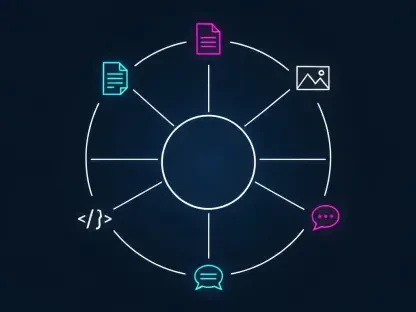Imagine entering your favorite gaming community on Discord, eager to catch up with friends and share strategies for the latest game releases. However, lurking within this digital playground is an unseen threat, waiting to exploit your trust. In a rapidly evolving digital landscape, cybersecurity attacks have taken on a new form that targets unsuspecting gamers through expired Discord links. Could the very platform gamers use to connect and collaborate become a gateway for cybercriminal activity?
Navigating Hidden Risks in the Virtual World
As online gaming communities flourish, safety becomes a paramount concern. Discord, a platform central to these communities, is now unwittingly exposing gamers to dangers through expired invitation links. These seemingly harmless links have become vectors for sophisticated scams, turning casual interactions into potential cybersecurity nightmares. The threat is insidious and largely unnoticed until it’s too late, raising the question: how well-equipped are gamers to protect themselves against such ingenious threats?
Cracking Open Discord’s Vulnerability
Expired Discord links were once an innocuous feature, allowing seamless re-entry into familiar communities. Now, they pose a vulnerability that cybercriminals exploit to hijack trusted links. Discord’s significance in the gaming community can’t be overstated—it’s a hub for sharing tips, forming alliances, and fostering friendships. However, the exploitation of expired links has made this vibrant community a target, turning erstwhile safe spaces into treacherous pools of risk.
Mastering the Art of Deception
The methodical scam unfolds in a calculated series of steps. Cybercriminals manipulate the expired links to redirect users to malicious servers under the guise of community verification, using fake bots like “Safeguard.” Once there, users are induced into clicking a “Verify” button, initiating a deceptive OAut## process called “ClickFix.” This leads them to a phishing site, where they are tricked into executing PowerShell commands. This subtle maneuver launches a malware chain, distributing payloads like AsyncRAT and Skuld Stealer without raising suspicion.
These schemes’ perilous scope unfolds through real-world examples; malware disguised as Sims 4 DLC unlockers has been downloaded over 350 times. This demonstrates a cunning operation that blends malicious activity into legitimate networks, bypassing traditional antivirus detections, and gaining remote control over compromised systems.
Expert Perspectives on Digital Perils
Cybersecurity experts emphasize the profound implications of these tactics, as attackers skillfully exploit community trust while disguising their malicious intentions. Studies call attention to the innovative nature of these threats, revealing how these cybercriminals leverage cloud services to obscure their activities. Recognized authorities in digital safety caution that these strategies reflect a broader trend of exploiting community dynamics to spread malware stealthily and effectively, underscoring the need for increased awareness and fortified defenses.
Shielding Against Cybercrime
Practical strategies are imperative for gamers to protect themselves from these malicious schemes. Employing robust identity theft protection services can monitor unauthorized use of personal data and aid in reclaiming compromised digital identities. It’s crucial to exercise vigilance and skepticism when engaging with online communities, particularly when dealing with expired Discord links. Avoid executing unsolicited scripts or following unexpected verification processes. Awareness is the first step; proactive measures can significantly bolster personal security in navigating the digital world.
As the discussion of digital safety evolves, gamers need to embrace active engagement in protective measures. With persistence and awareness, they can empower themselves against increasing cybersecurity threats. Through understanding the nuances of these attacks, the gaming community can stay one step ahead, preserving both their enjoyment and the integrity of their digital interactions.









